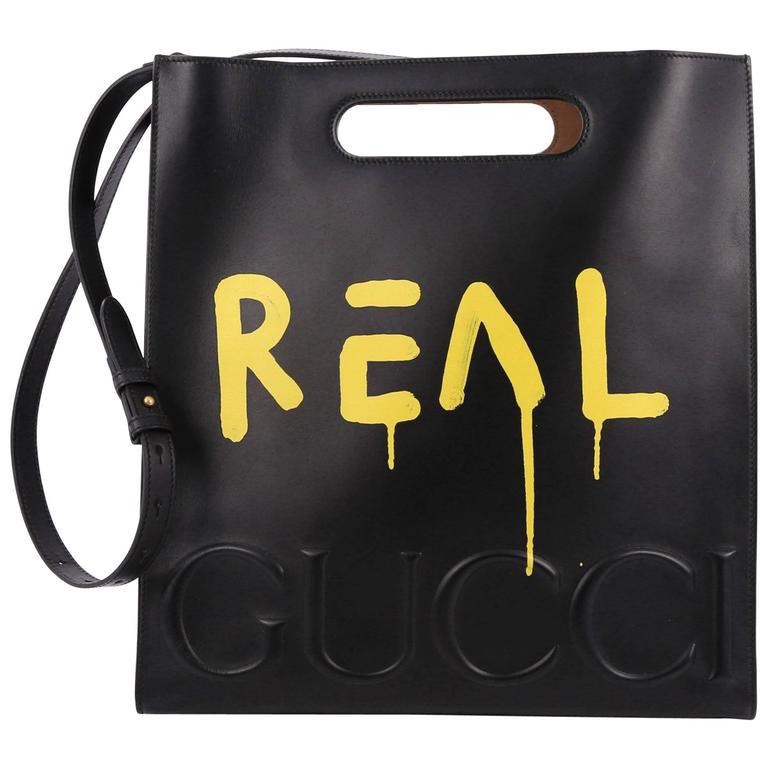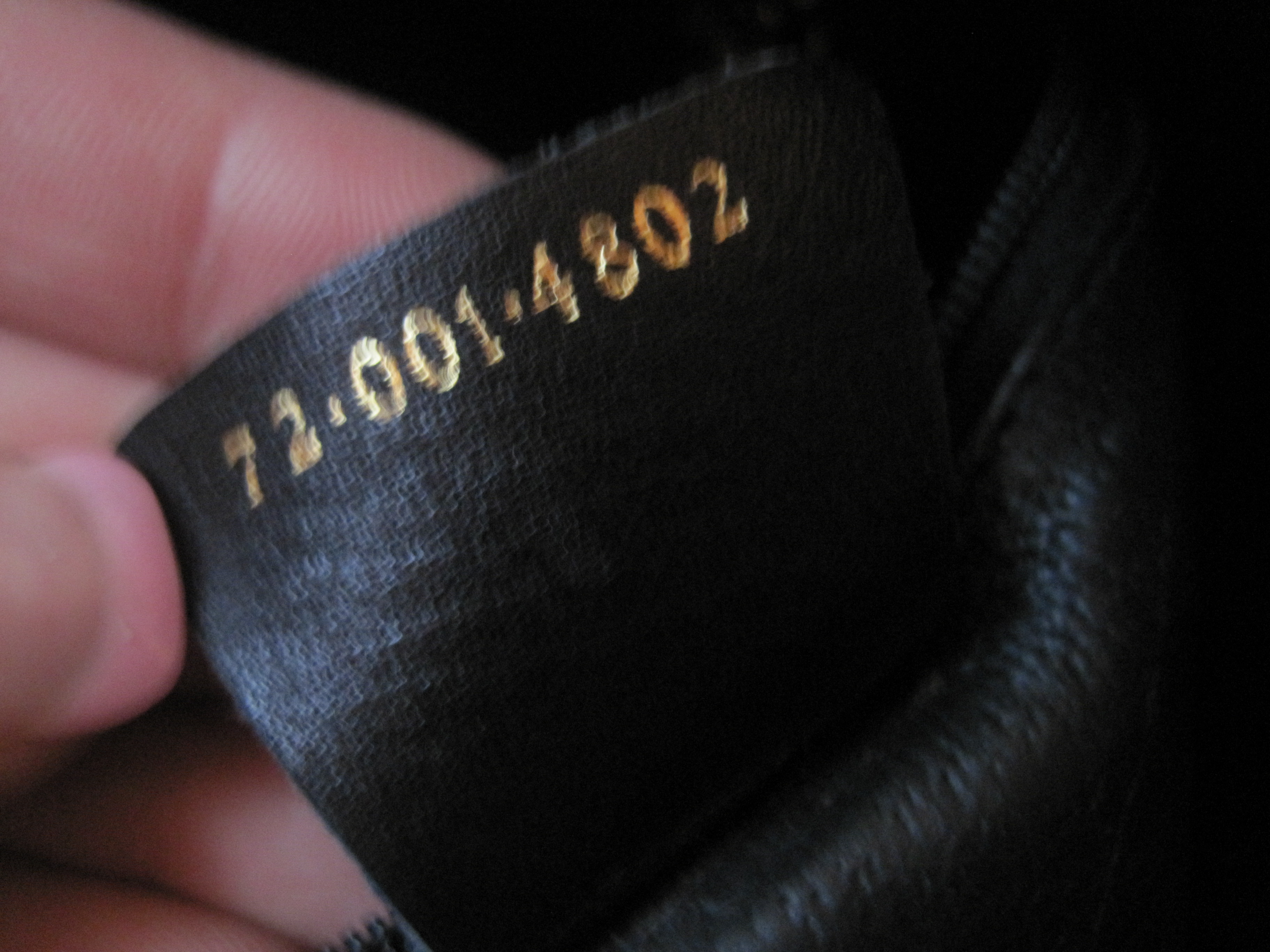

Although the type of leather varies, the logo will always be clearly imprinted. The edges of the tab will be very neat and straight, and always perpendicular to each other. In addition, the writing will always be perfectly straight and centered on the rectangular tab. Similarly, it will be cleanly and crisply imprinted onto the leather, and each row will always be perfectly centered. (Bags predating the 1990’s have different fonts, and this will be covered in a later guide). Regardless if the logo is imprinted on a tab or directly onto the leather, the font will be in the same style across all bags. Instead, the ‘GUCCI made in italy’ and the serial number are embossed directly onto the bag. Below: The slimmer Jackie, which does not have the flap.

The deeper one does have the leather tab, while the serial number is embossed directly onto the leather interior: Above: The deeper Jackie Flap bag with the standard leather tab. (It’s worth noting that there are two versions of this recently modernised take on Gucci’s classic Jackie bag: a slim one, and a deeper one. The tab on the top-right model is sewn directly onto the bag when there are no pockets, while the tab on the bottom-left is sewn onto the slip pocket.Įxceptions to this rule are wallets and the Jackie Convertible flap bag, which is essentially a shoulder bag that doubles as a wallet when you remove the strap.
GUCCI SERIAL NUMBER LOOK UP ZIP
Notice that the tabs on the top-left and bottom-right photos are attached to the leather trim surrounding the zip pocket. On some recent bags the tab can simply be found sewn on the interior directly if the bag has no pocket on the rear side. On some bags, they’re attached to the leather trim lining of a zip pocket or sewn directly under a slip pocket. Similarly, it will always be made out of leather (even if the bag is not), and will be in the same colour as the exterior. However, there are slight variations in how they’re attached to the interior. Here are some consistencies to take note of: you will always find the leather tab on the rear side, even on vintage bags. On the front, you’ll see the Registered Trademark symbol centred at the top, with the word ‘GUCCI’ in uppercase, and the words ‘made in italy’ below, in lowercase. It’s rectangular shaped, and is only attached to the bag along the top, allowing you to see the underside. The main area to look for when determining if a Gucci bag is real is the leather tab found inside the bag, on the rear side. Therefore, it’s become increasingly difficult to tell a counterfeit bag from a real one solely based on these factors. In their attempt to dupe you into parting with your cash, many counterfeiters use high quality leathers, fabrics and hardware, in addition to sophisticated tools and machinery. While these are vitally important factors when assessing a bag, the methods that counterfeiters use to produce fake goods are becoming more advanced.


Many authentication guides advise you to look at general areas of the bag in question, such as symmetry, the quality of the stitching, hardware, and the quality of the materials used.
GUCCI SERIAL NUMBER LOOK UP SERIAL NUMBERS
This is because their serial numbers and fonts have remained relatively consistent throughout the years. Unlike Céline, which has regularly changed its serial number layouts over the years, Gucci bags are generally straightforward when it comes to authentication.


 0 kommentar(er)
0 kommentar(er)
